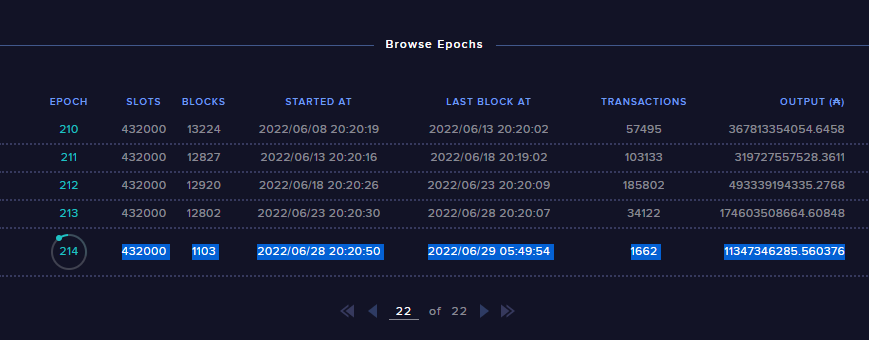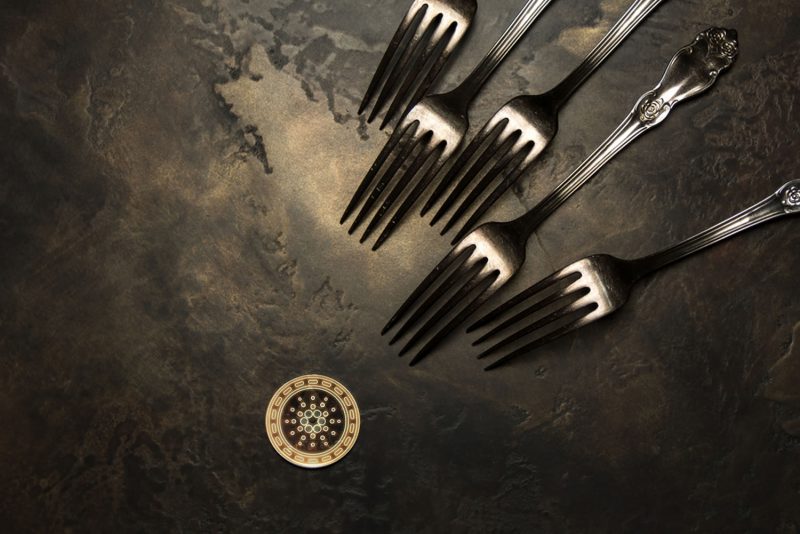Quite recently, the team behind Cardano’s development announced that the Vasil Hardfork was being delayed by a month to the last week of July. IOHK highlighted that it still had to iron out seven bugs and needed more time for testing.
Cardano inches one step closer to the Vasil upgrade
With the clock ticking already, IOHK announced yesterday that they’ve submitted an update proposal to hardfork the Cardano testnet. Per the team, the testnet currently has a good chain density to proceed with the fork “safely” because over 75% of the blocks have been created by the new Vasil node.
At this stage, it is important to note that Cardano is currently at epoch 214 on the testnet. As soon as the next epoch begins, the necessary changes and transitions would happen.
The Cardano network, as such, splits time into periods called epochs. One epoch lasts for approximately 5 days. This means that if an epoch starts in the middle of Sunday, it’d end in the middle of Friday. Epoch 214 began on 28 June at 20:20, implying that Cardano’s testnet would step into its next new epoch on 3 July.
IOHK highlighted,
“Once the changes have taken effect after the start of epoch 215 at 20:20 UTC on 3 July, the Cardano testnet will start to enjoy the new Vasil enhancements and capabilities that we’ll soon see on mainnet.”


Another delay?
Since last September’s Alonzo hardfork, the Vasil hardfork is Cardano’s next most critical update. The said development intends to reduce the size of transactions, and boost the network’s transactional ability. Alongside, the transaction fee is also set to shrink, making it Cardano’s “biggest” and “best” upgrade. IOHK stressed,
“Vasil improvements include higher throughput through diffusion pipelining to a better developer experience via much-improved script performance & efficiency (plus lower costs). It is Cardano’s biggest and best upgrade to date.”
The team also revealed that the community has requested a minimum period of four weeks to allow SPOs, devs, and exchanges, the time they need to test and upgrade before hard forking the Cardano mainnet. Only once everyone is “comfortable” and “ready,” would the same process be followed to upgrade the mainnet.
Now, four weeks from 3 July means that the actual HFC event would likely take place at the beginning of August instead of the pre-proposed end of July. Since this is “the most complex program” that the team has undertaken, they are in no haste and want the boat smooth sail. IOHK noted,
“… our prime concern is ensuring we manage this upgrade in a way that is safe and secure.”
Price-wise, Cardano’s native token has remained inert. Over the past few months, ADA has hardly reacted to any network upgrade/ecosystem-related dev. Additionally, as highlighted in an article yesterday, the state of its on-chain metrics isn’t that appealing at the moment. Thus, the odds of an ADA pump around the time of the testnet upgrade seem to be fairly slim at the moment.





